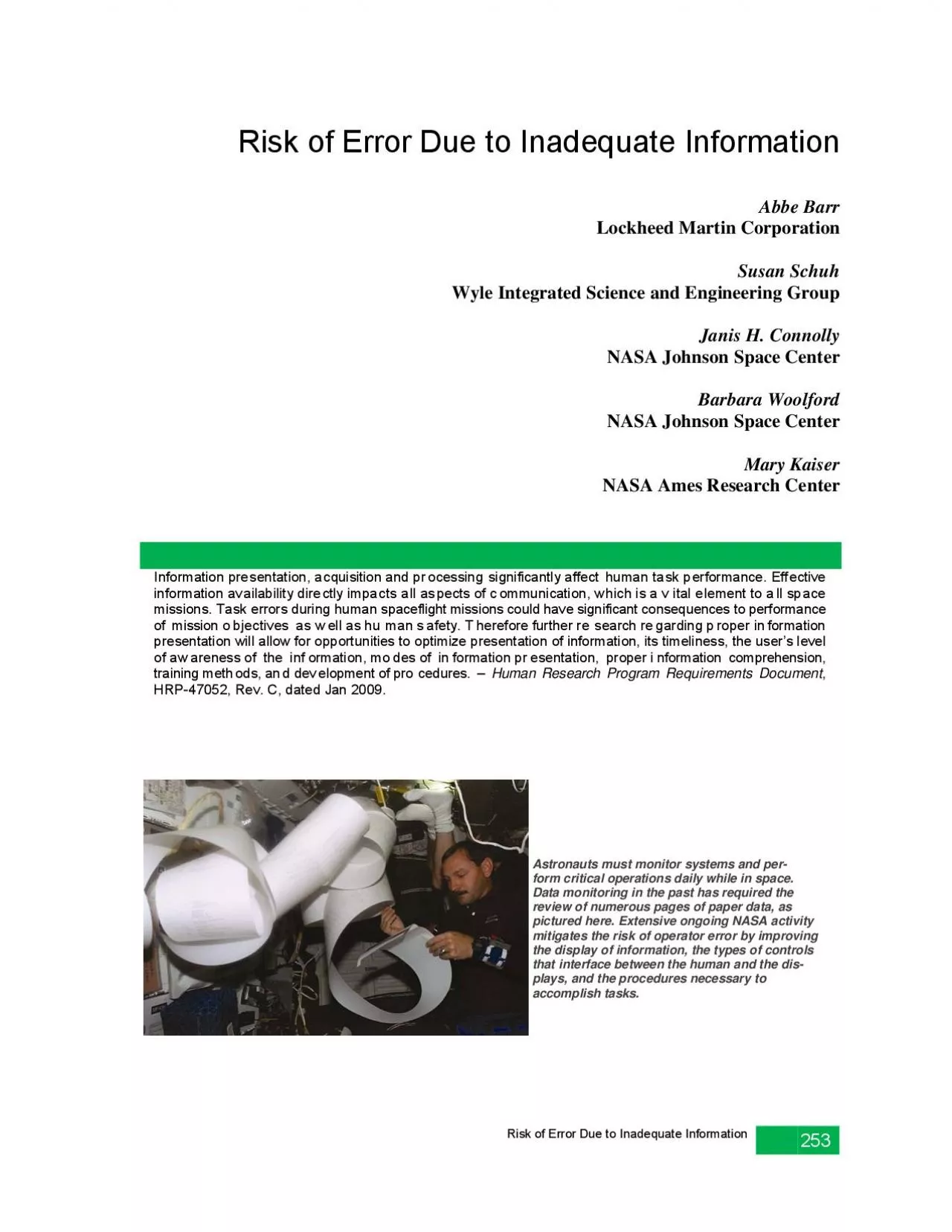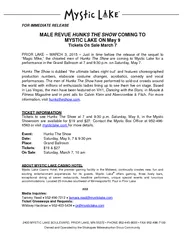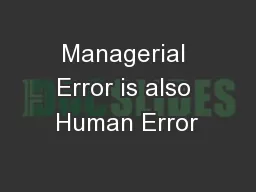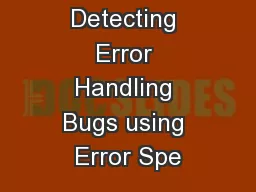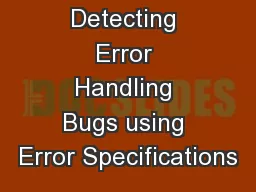PDF-Risk of Error Due to Indequte Infortion
Author : samantha | Published Date : 2021-10-03
Risk of Error Due to Indequte Infortion Astronauts must monitor systems and perform critical operations daily while in space Data monitoring in the past has required
Presentation Embed Code
Download Presentation
Download Presentation The PPT/PDF document "Risk of Error Due to Indequte Infortion" is the property of its rightful owner. Permission is granted to download and print the materials on this website for personal, non-commercial use only, and to display it on your personal computer provided you do not modify the materials and that you retain all copyright notices contained in the materials. By downloading content from our website, you accept the terms of this agreement.
Risk of Error Due to Indequte Infortion: Transcript
Download Rules Of Document
"Risk of Error Due to Indequte Infortion"The content belongs to its owner. You may download and print it for personal use, without modification, and keep all copyright notices. By downloading, you agree to these terms.
Related Documents

